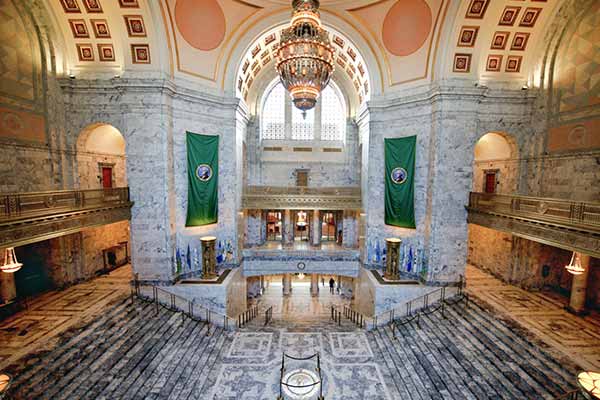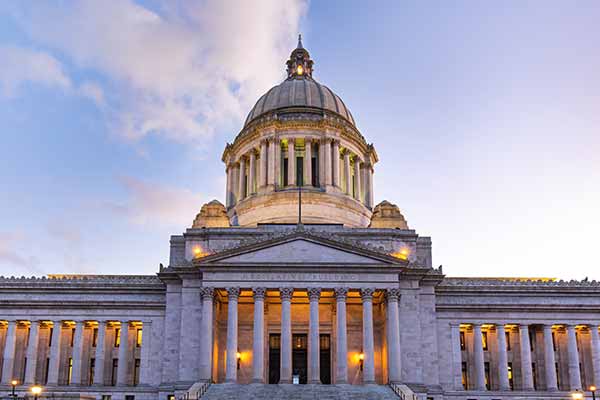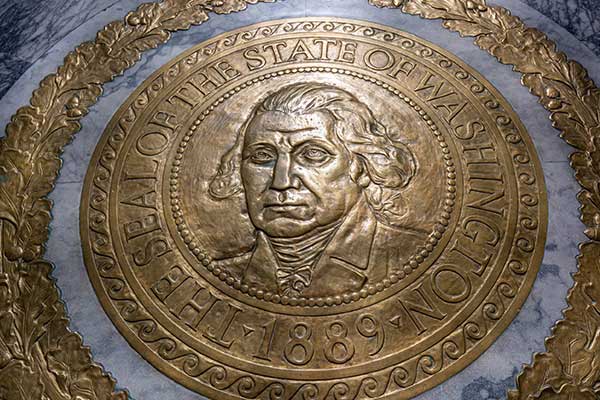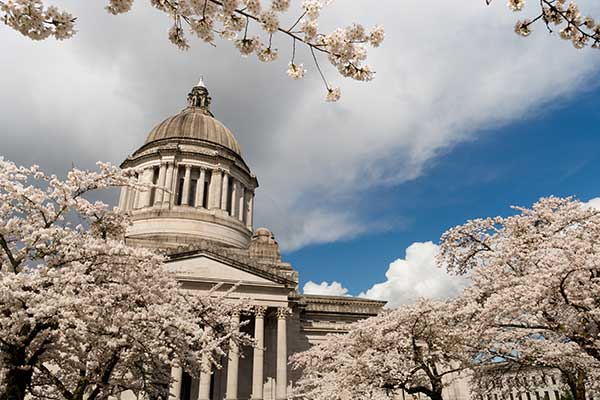


Policy Driving Changes

State of Washington
The State of Washington's Department of Ecology is the state’s lead agency for decarbonization and policies to reduce greenhouse gas emissions.
Washington Laws, Rules & Polices
The following timeline provides a high-level overview of the policies influencing today’s zero-emissions efforts in Washington state.
2007
Gov. Christine Gregoire established GHG reduction goals in February 2007 with Executive Order 07-02, setting the wheels in motion for future action on the “Washington Climate Change Challenge.”
2013
In October 2013, Gov. Jay Inslee signed the Pacific Coast Collaborative, committing Washington along with the entire West Coast, to lead on climate policy by putting in place a price on greenhouse gas pollution and mandating use of cleaner-burning fuels.
Inslee also established the Climate Legislative Executive Working (CLEW) Group in an attempt to bring together different perspectives on climate issues. This triggered subsequent legislative debates over aggressive climate policy proposals.
2019
The Washington State Legislature passed the Clean Energy Transformation Act (CETA) aimed at decarbonizing Washington’s energy sector by 2045.
2020
The Washington State Legislature changed the Greenhouse Gas (GHG) emission levels, adopting former Gov. Gregoire’s goals and making them more stringent. The updated limits (RCW 70A-45-020) are revised to 45% below 1990 levels by 2030, 70% below 1990 levels by 2040, and 95% below 1990 levels by 2050.
On July 14, 2020, 15 states and the District of Columbia announced a joint memorandum of understanding (MOU), committing to work collaboratively to advance and accelerate the market for electric medium- and heavy-duty vehicles. The goal is to ensure that 100 percent of all new medium- and heavy-duty vehicle sales be zero emission by 2050 with an interim target of 30 percent zero-emission vehicle sales by 2030.
States signing the MOU are: California, Connecticut, Colorado, Hawaii, Maine, Maryland, Massachusetts, New Jersey, New York, North Carolina, Oregon, Pennsylvania, Rhode Island, Vermont, and Washington.
The Legislature also adopted the Motor Vehicle Emission Standards – Zero-Emission Vehicles law (RCW 70A.30.010), adopting California’s emission standards and creating new requirements to gradually increase the number of new zero-emission vehicles (ZEV) sold in Washington. All new vehicles must meet the ZEV standard starting in 2035. The program specifically spells out new low-emission vehicle requirements for medium- and heavy-duty trucks.
2021
In 2021, the Legislature approved the Climate Commitment Act to adopt a cap and invest program aimed at curbing carbon emissions. The clean fuel standard was also adopted, which established RCW 70A.535. The immediate impact was a surge in Washington fuel prices, starting at $.55/CPG.
2022
On Jan. 6, 2022, six states, including Oregon and Washington, followed California in approving the Advanced Clean Truck rule, requiring a growing percentage of all medium- and heavy-duty trucks sold to be zero-emission starting in 2025/2026.
By law, manufacturers are required to increase their zero-emission truck sales in those states to 30% to 50% by 2030, and 40% to 75% by 2035.
2023
The Climate Commitment Act is enacted in Washington state.
